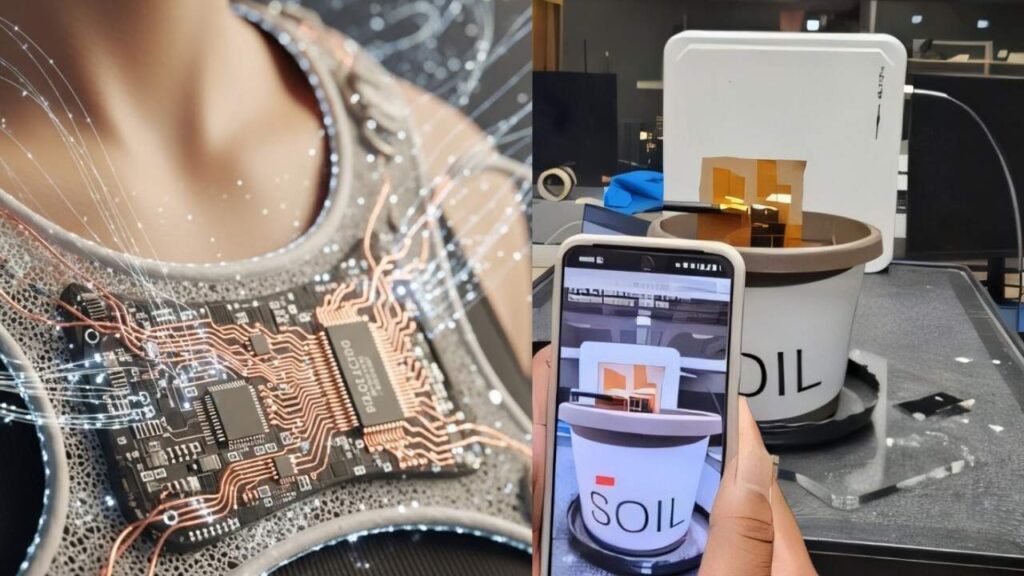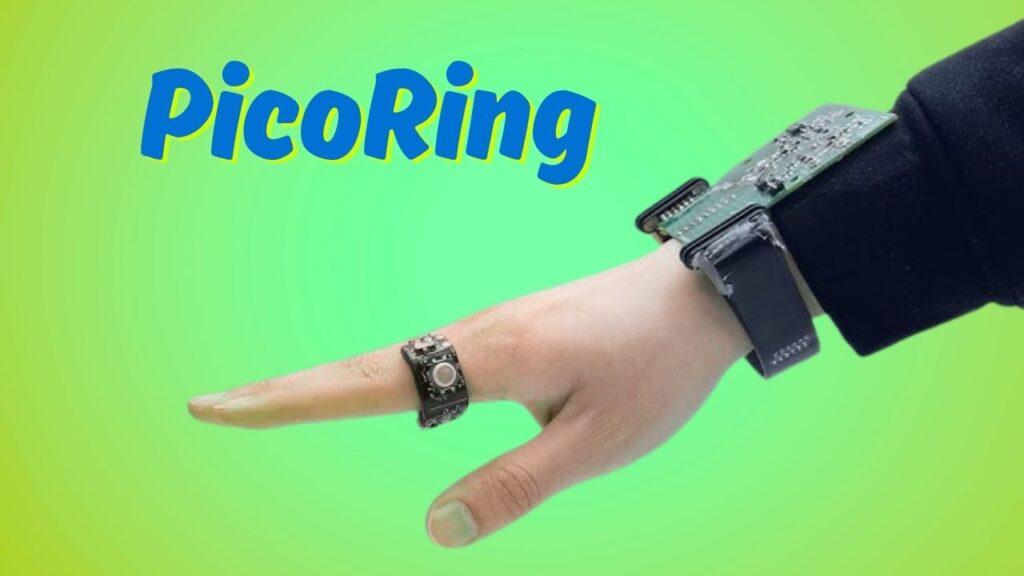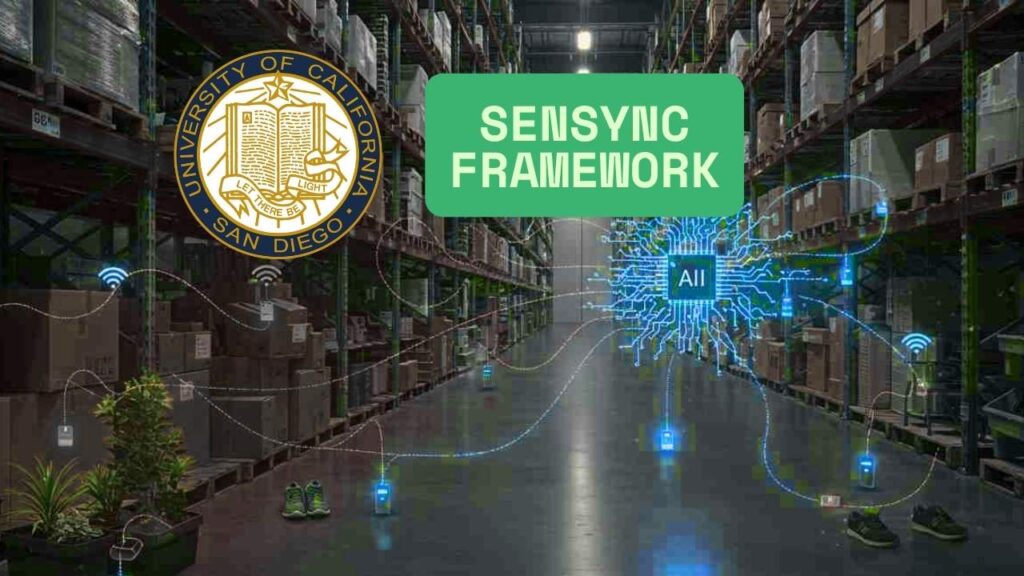Battery-Free Physical AI: Battery-Free Physical AI is transitioning from theoretical potential to tangible innovation. By harnessing ambient energy and analog processing, researchers are crafting lightweight, maintenance-free devices that understand and interact with the world—without ever needing a battery.

Two standout breakthroughs are picoRing, a gesture-detecting smart ring from UC San Diego, and the broader SenSync framework that integrates analog AI systems into everyday objects.
Battery-Free Physical AI
| Sector | Use Case |
|---|---|
| Smart Wearables | picoRing enhances controlling phones without charging or batteries. |
| Smart Homes | Battery-free sensors embedded in furniture can detect interaction without wiring. |
| Healthcare | Skin patches or implants that monitor vitals and send alerts indefinitely. |
| Industrial IoT | Environmental or machinery sensors that report metrics continuously without maintenance. |
| Robotics | Analog AI controllers enabling robots to sense and adapt with negligible power. |
| Asset Tracking | Smart tags powered by ambient LTE or Wi-Fi can track inventory with minimal cost. |
Battery-free Physical AI is ushering in a new era of smarter, lighter, and more sustainable devices. With platforms like SenSync and innovations such as picoRing, we’re moving away from bulky, battery-dependent gadgets toward intelligent systems that power themselves and live seamlessly alongside us.
From wearable rings to home systems and healthcare monitors, this technology promises to make AI more accessible, eco-friendly, and integrated into our daily lives.
What Makes This Innovation Revolutionary?
- No Batteries Required
Devices like picoRing harvest energy from the surroundings—such as radio signals or inductive fields—fully replacing traditional batteries. - Compact & Comfortable
picoRing weighs just 1.5 g and can detect gestures up to 13 cm away—even around metal—thanks to passive inductive coupling. - Real-World Intelligence
These devices use analog AI computation, allowing them to sense, process, and react in real time without digital processors or cloud connectivity. - Broad Applications
From silent wearables to interactive surfaces and healthcare implants, the possibilities are vast and diverse.
How picoRing Works

UCSD researchers presented picoRing at the UIST 2024 conference. The system comprises two parts:
- Ring: A tiny, fully passive coil with embedded switches that encode user input (press, swipe, scroll).
- Wristband: Contains a reader coil tuned to detect the ring’s passive signals up to 13 cm away—even when bending or near metal.
Gesture recognition accuracy for simple presses reached an impressive 99.7%, with a signal-to-noise ratio of 11–13 dB linnk.ai. The tight integration between ring and wristband allows consistent, real-time input without any onboard power source.
The SenSync Framework
Beyond picoRing, UCSD’s SenSync framework integrates analog AI circuits, sensors, and ambient energy harvesting into a cohesive system:
- Signal-Based Computation: Uses the physics of circuits—not CPUs—to process data in real time.
- Tiny Analog Models: Implements low-complexity AI through analog components that function reliably with minimal energy.

- Synchronization: Sensors and AI logic are tightly synchronized—hence the name “SenSync.”
This architecture enables devices that intelligently sense and respond while remaining endlessly powered by ambient energy.
Related Battery-Free Technologies
MARS (Nano‑Power Interfaces)
Developed at Georgia Tech, MARS systems enable touch, swipe, and voice interactions using analog backscatter and ambient power—operating at just ~2 µA and startup voltages < 0.5 V.
AllSee
The University of Washington’s AllSee platform uses TV signals to power ultra-low-power gesture sensors with over 90% accuracy and response time under 80 µs—1000 times faster than blinking.
SolarGest

Harnesses solar cell photocurrent shifts to detect gestures with 96% accuracy across six gesture types—demonstrating sustainable gesture recognition using environmental energy.
Benefits: Why Battery-Free Is a Breakthrough
- Maintenance-Free Operation: No charging means less user friction and zero downtime.
- Ultra-Compact Designs: Without batteries, devices can be smaller and lighter.
- Eco-Friendly: No battery disposal improves sustainability.
- Cost Efficiency: Eliminating batteries reduces production costs.
- Always-On Intelligence: Devices are always ready to sense and respond without energy constraints.
Challenges to Overcome
- Limited Computation
Analog AI supports only simple models—larger tasks still require digital processing. - Range & Environment
Energy harvesting depends on proximity to fields—performance may degrade in cluttered or distant environments. - Signal Reliability
Analog systems are vulnerable to interference and noise. - Integration Ecosystems
Devices like picoRing require matching readers—future success depends on allowing integration with existing platforms.
Roadmap: What’s Next?
- Enhance Analog Models: Increase capabilities for classification and routing via frameworks like routing for intermittent systems.
- Open Standards: Promote interoperability so third-party devices can support SenSync and picoRing.
- Expanded Form Factors: Beyond rings—include glasses, clothes, and home products.
- Hybrid AI Models: Combine local analog processing with occasional cloud support for more advanced features.
- Commercialization: Consumer-ready products may emerge within 2–4 years.
Turning Trash Into Treasure: How Microwaves May Be the Future of High-Speed Recycling
Breakthrough Carbon Capture Method Could Make Cement Ingredients Climate-Friendly
FAQs About Battery-Free Physical AI
Can these devices run deep neural networks?
No. These are designed for simple tasks. For complex models, a hybrid approach with cloud or digital-on-demand computation is needed.
How do they harvest energy?
They draw energy from ambient radio waves, inductive coupling, ambient light, or thermal differences.
Are they safe for wearables?
Yes. They operate at electromagnetic levels similar to common wireless technologies, staying well within safety regulations.
What’s the timeline for adoption?
picoRing and similar prototypes exist today. Consumer products are expected within the next 2–4 years, with industrial and healthcare solutions likely to precede them.
Do they pose privacy risks?
Potentially—continuous passive sensing could track gestures. Privacy safeguards like on-device data processing and transparent controls are essential.






